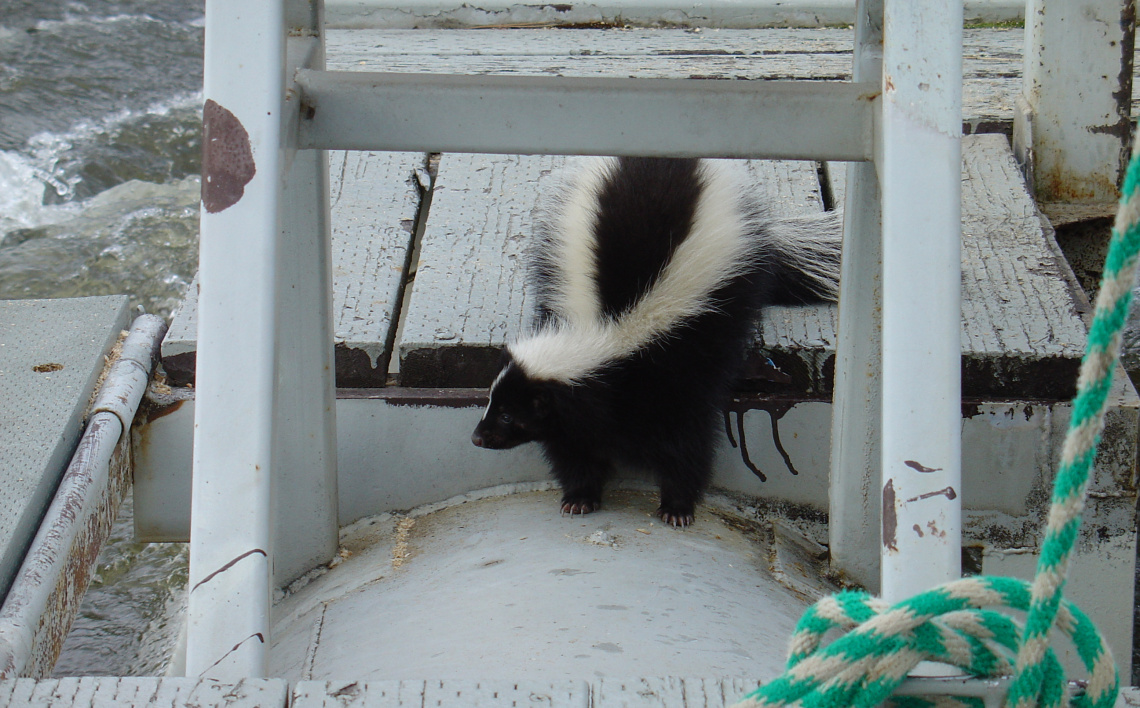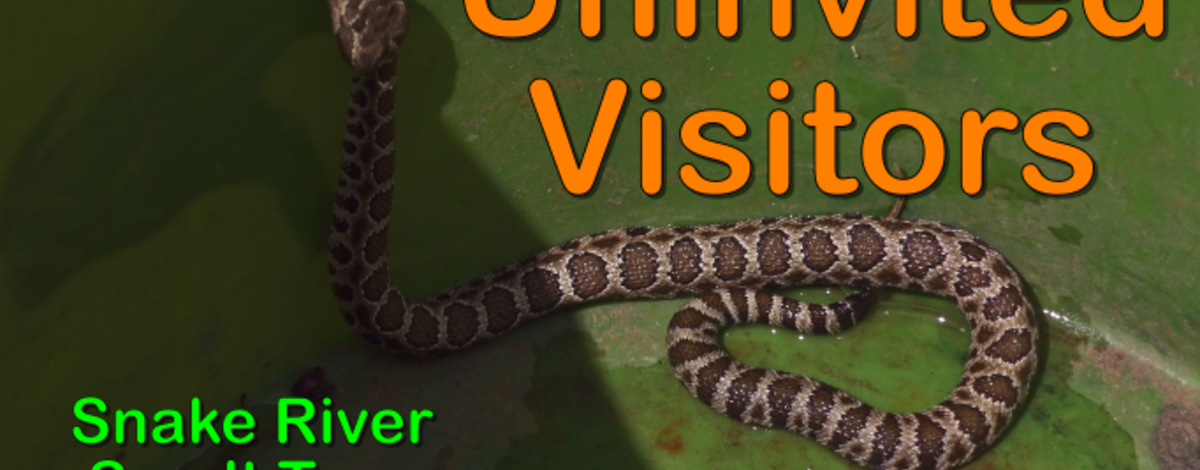Stepping onto the mainstem Salmon and Snake River smolt traps is like arriving at the tree on Christmas morning. One never knows what surprises may be in store. While biologists expect to find fish, Mother Nature may surprise them with a fanged or smelly intruders.
Beginning in early March and continuing through May, the crews arrive each morning to see what the fish traps caught during their absence. They expect to see juvenile Chinook salmon, steelhead trout, and other anadromous fishes that are intercepted during their migration to the Pacific Ocean. Occasionally, crews find unexpected items such as unmatched sandals, golf and tennis balls, beach toys, and a variety of canned beverages.
Besides the lost items that find their way to the trap, wildlife guests can also find their way in or onto the traps. At the Salmon River smolt trap near White Bird, the crew arrived one morning to find a young skunk walking around the trap platform. The crew was unsure how the skunk arrived but it likely either washed into the trap or swam aboard during the night since it was already dry. The stowaway was more concerned about its predicament than about the crew’s presence as they contemplated how to remove their new guest. The skunk was eventually released back on shore to continue on his adventures. Fortunately, no lingering reminders of the encounter were left on the fish trap or the crew.

Other uninvited visitors are not so cuddly in appearance. Live rattlesnakes are occasionally discovered on the fish traps even though the traps operate away from shore. These hitchhikers usually arrive on large woody debris that floats into the trap during spring runoff. Fortunately, snakes are cold-blooded and during the spring, cold water temperatures and cool mornings keeps these guys pretty inactive so the crews are able to remove them from the trap without much risk. Crews scoop them into a bucket and release them onshore downriver, hoping not to see them again.
Some of the more unpleasant encounters at the trap involved carcasses of cattle, deer, elk and other wildlife that float into the fish trap. Most are easily removed, however, they occasionally get caught in sections of the trap that are difficult to reach. Imagine the experience of trying to work while dealing with the smell of a skunk carcass caught up in a part of the trap you can’t safely reach.
Many folks are not aware of the unexpected hazards of trying to conduct good fish research in the field. Fish traps catch more than just fish and it can be a dirty, stinky job. However, fishery technicians deal with the uninvited visitors to do good work that benefits salmon, steelhead trout, and those whom participate in our fisheries!

